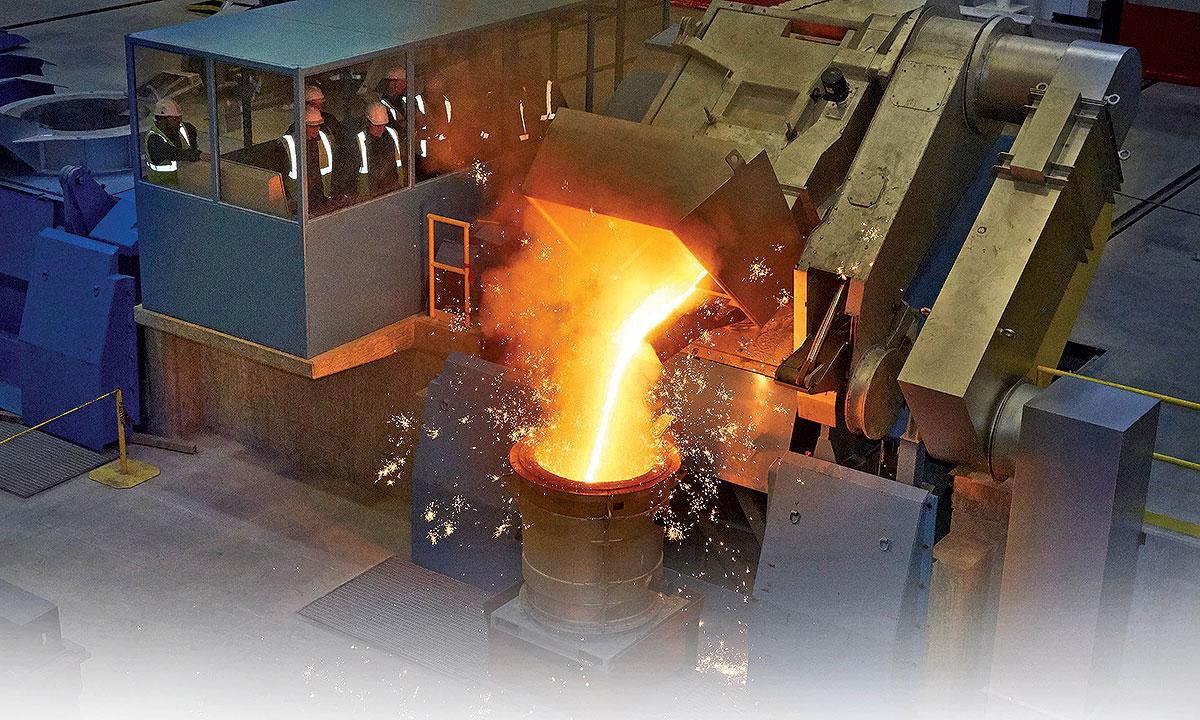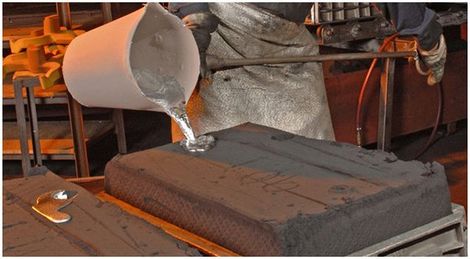Key Reasons Why Aluminum Casting is Preferred in Engineering
Wiki Article
Checking out the Art of Metal Casting: Strategies and Applications in Modern Foundries
Metal casting is a time-honored craft that combines virtuosity with engineering accuracy. From old techniques to modern improvements, this process has actually evolved substantially. Various approaches, such as sand casting and lost-wax casting, display the flexibility of the medium. Innovations like 3D printing are improving how factories run. As the lines between functionality and virtuosity blur, one should think about exactly how these growths impact both contemporary applications and standard techniques. What lies ahead in this progressing landscape?The Principles of Metal Casting
Metal casting, a pivotal process in production, entails pouring molten steel right into a mold to accomplish a wanted form. This technique functions as a foundation in the production of intricate metal elements across numerous sectors. Key elements of metal casting include the selection of materials, which can range from aluminum to steel, each chosen for its particular homes and application viability. The process begins with mold creation, which can be made from sand, metal, or porcelains, depending on the casting technique utilized. The molten steel is after that carefully poured into the mold, where it strengthens and cools. Crucial variables such as temperature control, cooling down price, and mold design greatly influence the final product's quality and features. In enhancement, understanding the physical and chemical properties of the metal help in enhancing casting performance, inevitably boosting the effectiveness of the production procedure and guaranteeing high-quality outcome customized to particular demands.Traditional Casting Strategies
Conventional casting techniques encompass a variety of approaches that have stood the test of time, demonstrating their effectiveness in creating complex metal components. One famous approach is sand casting, which employs a blend of sand and a bonding agent to develop molds. The versatility of sand casting permits the manufacturing of varied forms, making it ideal for both small-scale and large-scale manufacturing. Another notable method is investment casting, usually utilized for precise and intricate geometries. This approach entails producing a wax pattern that is covered in a ceramic covering, which is then heated to eliminate the wax, leaving a cavity for molten metal. In addition, pass away casting is made use of for high-volume production, where molten metal is infused right into reusable metal mold and mildews. Each of these standard techniques continues to be pertinent, showcasing the craftsmanship and ability intrinsic in the art of steel casting, while fulfilling the demands of various industries.Modern Innovations in Metal Casting
As industries develop, innovations in steel casting are reshaping manufacturing procedures and enhancing effectiveness. Advanced technologies such as 3D printing and computer-aided design (CAD) are reinventing mold and mildew development, allowing for complex designs that were previously unattainable. These approaches help with rapid prototyping, cultivating and lowering lead times imagination in item advancement.Furthermore, the integration of automation and robotics in shops is improving operations, decreasing human mistake, and enhancing safety and security. Smart sensors and real-time surveillance systems allow precise control of temperature and product residential properties, ensuring greater high quality outcomes.
Lasting techniques are arising, with the usage of recycled products and energy-efficient heaters, reducing environmental influence. The fostering of innovative alloys and composite materials is additionally expanding the possibilities of steel casting, resulting in more powerful and lighter components. In general, these modern innovations are transforming steel casting right into a more reliable, exact, and eco responsible market.
Applications Across Various Industries

While diverse markets increasingly rely on metal casting, the technique's versatility plays a vital duty in meeting specific application demands. In the automobile field, metal casting is vital for generating engine parts, transmission real estates, and various other elaborate parts that require precision and toughness. The aerospace sector take advantage of light-weight casted elements, making sure both efficiency and fuel effectiveness. Furthermore, the building market makes use of metal casting for architectural components, such as beam of lights and supports, improving the honesty of bridges and buildings.
The energy market employs steel casting for turbine blades and other substantial machinery that must endure extreme problems. Clinical tools also see applications of metal casting, specifically in medical tools and prosthetics, where accuracy is important - Aluminum Foundry. Generally, the flexibility and reliability of steel casting make it indispensable throughout numerous areas, adding to the development of innovation and facilities in modern society
The Artistic Side of Metal Casting
Although commonly connected with industrial applications, steel casting likewise discovers its location in the domain of art, where skilled artisans transform molten metal right into detailed layouts and expressive sculptures. This artistic side of steel casting encompasses varied strategies, including sand casting, lost-wax casting, and financial investment casting, each offering unique opportunities for imagination. Musicians make use of these approaches to generate works that range from abstract kinds to lifelike representations, enabling for personal expression and discourse on modern concerns.
Frequently Asked Concerns
What Safety And Security Measures Are Vital in a Steel Casting Foundry?
Necessary security procedures in a steel casting foundry include personal protective equipment, proper ventilation, emergency methods, training in managing liquified steels, routine devices upkeep, and clear interaction of hazards to ensure worker safety and health. Metal Foundry.Just How Do Environmental Rules Impact Metal Casting Processes?
Ecological regulations greatly affect steel casting procedures by mandating the usage of cleaner innovations, reducing emissions, and advertising waste administration methods. Compliance usually needs financial investments in devices, training, and alterations to existing treatments to lessen ecological influence.What Are the Usual Defects in Metal Spreadings?
Usual flaws in steel spreadings consist of porosity, shrinking, incorporations, and misruns. These concerns can occur from incorrect mold and mildew style, inadequate temperature level control, or contamination, inevitably affecting the architectural integrity and overall quality of the final item.How Is Waste Managed Throughout Metal Casting Manufacturing?
Waste administration in steel casting manufacturing includes recycling scrap metal, applying reliable material usage, and utilizing advanced modern technologies to decrease waste. Factories take on techniques like sand improvement and appropriate disposal methods to lower environmental impact.What Occupation Opportunities Exist in the Metal Casting Sector?
The metal casting sector provides diverse career opportunities, consisting of roles such as shop supervisor, metallurgical engineer, quality control assessor, pattern maker, and manufacturing supervisor, catering to various capability and know-how in manufacturing processes.Metal casting, a crucial process in manufacturing, includes putting molten steel right into a mold to attain a desired shape. In addition, pass away casting is used for high-volume manufacturing, where liquified metal is injected right into recyclable steel mold and mildews. While varied industries significantly depend on steel casting, the technique's flexibility plays a vital function in meeting particular application requirements. Usually associated with commercial applications, home metal casting likewise Clicking Here finds its area in the domain name of art, where knowledgeable artisans change molten metal into elaborate styles and meaningful sculptures. Waste management in steel casting manufacturing involves reusing scrap steel, implementing reliable product usage, and utilizing sophisticated innovations to minimize waste.
Report this wiki page